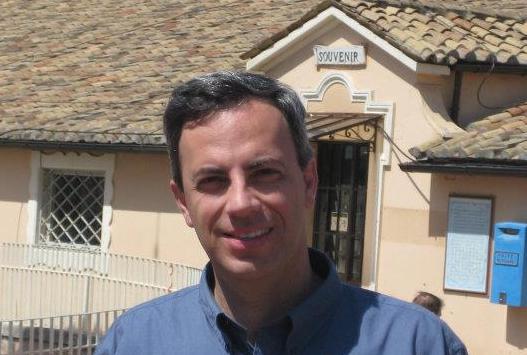
“Always remember there are only two kinds of people in this world—the realists and the dreamers. The realists know where they’re going. The dreamers have already been there.”
I have found this nice little book by John C. Maxwell, “Put Your Dream to the Test: 10 Questions to Help You See It and Seize It ” and I also listened to the audio book version in Spanish (Vive Tu Sueno!: 10 Preguntas Que Te Ayudaran a Verlo Y Obtenerlo). I found it inspiring.
According to best-selling author Dr. John Maxwell, the difference between a dreamer and someone who achieves a dream lies in answering ten powerful, yet straightforward questions. The ideas in this post are from the first chapter of Maxwell’s book.
What is your dream?
What is your dream? Will you achieve it in your lifetime? What odds would you give yourself? How can you tell whether your chances are good or whether your dream will always remain exactly that—a dream? And are you willing to put it to the test?
Most people we know have a dream. Some willingly describe it with great detail and enthusiasm. Others are reluctant to talk about it. They seem embarrassed to say it out loud. These people have never tested their dream. They don’t know if others will laugh at them. They’re not sure if they’re aiming too high or too low. They don’t know if their dream is something
they can really achieve or if they’re destined to fail. They have no idea how to achieve their dreams.
What they possess is a vague notion that there is something they would like to do someday or someone they would like to become. But they don’t know how to get from here to there.
THE RIGHT AND WRONG PICTURE OF A DREAM
A lot of people have misconceptions about dreams. John C. Maxwell lists some of the things that people pursue and call dreams in their lives:
Daydreams—Distractions from Current Work
Pie-in-the-Sky Dreams—Wild Ideas with No Strategy or Basis in Reality
Bad Dreams—Worries that Breed Fear and Paralysis
Idealistic Dreams—The Way the World Would Be If You Were in Charge
Vicarious Dreams—Dreams Lived Through Others
Romantic Dreams—Belief that Some Person Will Make You Happy
Career Dreams—Belief that Career Success Will Make You Happy
Destination Dreams—Belief that a Position, Title, or Award Will Make You Happy
Material Dreams—Belief that Wealth or Possessions Will Make You Happy
But if these aren’t good dreams—valid ones worthy of a person’s life—then what are?
Here is Maxwell’s definition of a dream that can be put to the test and pass:
a dream is an inspiring picture of the future that energizes your mind, will, and emotions, empowering you to do everything you can to achieve it. A dream worth pursuing is a picture and blueprint of a person’s purpose and potential.
WHAT DO YOU HAVE IN MIND?
Dreams are valuable commodities. They propel us forward. They give us energy. They make us enthusiastic. Everyone ought to have a dream. But what if you’re not sure whether you have a dream you want to pursue? Let’s face it. Many people were not encouraged to dream. Others have dreams but lose hope and set them aside.
But people can find or recapture their dreams. And they can be big dreams, not that all dreams have to be huge to be worth pursuing. They just need to be bigger than you are.
As actress Josie Bisset remarked,
“Dreams come a size too big so that we can grow into them.” —JOSIE BISSET
The most common reasons that people have trouble identifying their dream are usually one of these five:
SOME PEOPLE HAVE BEEN DISCOURAGED FROM DREAMING BY OTHERS. Many people have had their dreams knocked right out of them! The world is filled with dream crushers and idea killers. Some people who aren’t pursuing any dreams of their own don’t like to see others pursuing theirs. Other people’s success makes them feel inadequate or insecure.
SOME PEOPLE ARE HINDERED BY PAST DISAPPOINTMENTS AND HURTS. Disappointment is the gap that exists between expectation and reality. All of us have encountered that gap. We’ve had unexpectedly bad experiences. We’ve had to live with our unfulfilled desires and we’ve had our hopes dashed. Disappointments can be highly damaging to us. Disappointment is the gap that exists between expectation and reality.
SOME PEOPLE GET IN THE HABIT OF SETTLING FOR AVERAGE. Columnist Maureen Dowd says, “The minute you settle for less than you deserve, you get even less than you settled for.” Dreams require a person to stretch, to go beyond average. You can’t reach for a dream and remain safely mediocre at the same time. The two are incompatible. When we are too uninspired to dream, when we settle for average, we may be tempted to blame it on others, on our circumstances, on the system. But the truth is that mediocrity is always a personal choice.
SOME PEOPLE LACK THE CONFIDENCE NEEDED TO PURSUE THEIR DREAMS. It takes confidence to talk about a dream and even more to pursue it. And sometimes confidence separates the people who dream and pursue those dreams from those who don’t. Dreams are fragile. And they are at greatest risk when they are new to you, when people you love and respect don’t approve of them, and when you have no past record of success to give you confidence.
SOME PEOPLE LACK THE IMAGINATION TO DREAM. How do people discover their dreams? By dreaming! That may sound overly simplistic, but that’s where it starts. Imagination is the soil that brings a dream to life. Nobel Prize–winning physicist Albert Einstein, a dreamer and thinker, understood the value of the imagination. He said, “When I examine myself and my methods of thought, I come to the conclusion that the gift of fantasy has meant more to me than my talent for absorbing positive knowledge.” Einstein called his imagination a “holy curiosity.” Imagination is the soil that brings a dream to life.
John Maxwell believes that God wants us to dream, and to dream big, because He’s a big God who wants to do big things and He wants to do them through us. Dale Turner said, “Dreams are renewable. No matter what our age or condition, there are still untapped possibilities within us and new beauty waiting to be born.” It’s never too late to dream.
I agree with Maxwell, it’s never too late to dream and work on reaching it.

ARE YOU READY TO PUT YOUR DREAM TO THE TEST?
You may be saying to yourself, I’ve got a dream. I think it’s worth pursuing. Now what? How can I know that my odds are good for achieving it? That brings us to the questions, which comprise the ten chapters of the book “Put Your Dream to the Test: 10 Questions to Help You See It and Seize It. Here they are:
- The Ownership Question: Is my dream really my dream?
- The Clarity Question: Do I clearly see my dream?
- The Reality Question: Am I depending on factors within my control to achieve my dream?
- The Passion Question: Does my dream compel me to follow it?
- The Pathway Question: Do I have a strategy to reach my dream?
- The People Question: Have I included the people I need to realize my dream?
- The Cost Question: Am I willing to pay the price for my dream?
- The Tenacity Question: Am I moving closer to my dream?
- The Fulfillment Question: Does working toward my dream bring satisfaction?
- The Significance Question: Does my dream benefit others?
John C. Maxwell believes that if we really explore each question, examine ourselves honestly, and answer yes to all of them, the odds of our achieving our dreams are very good. The more yeses we can answer, the more on target we are to fulfill our dreaming.
“Always remember there are only two kinds of people in this world—the realists and the dreamers. The realists know where they’re going. The dreamers have already been there.”
BUY On AMAZON: Put Your Dream to the Test: 10 Questions to Help You See It and Seize It

